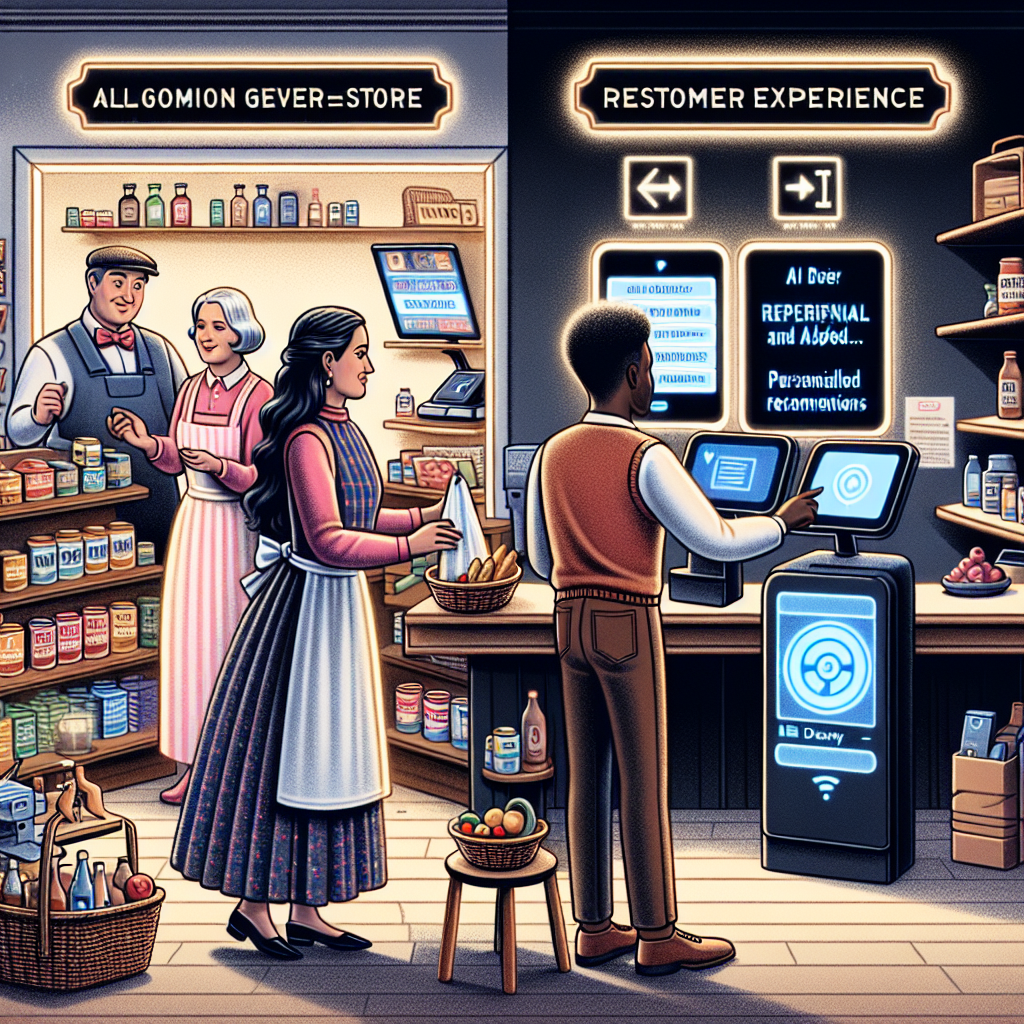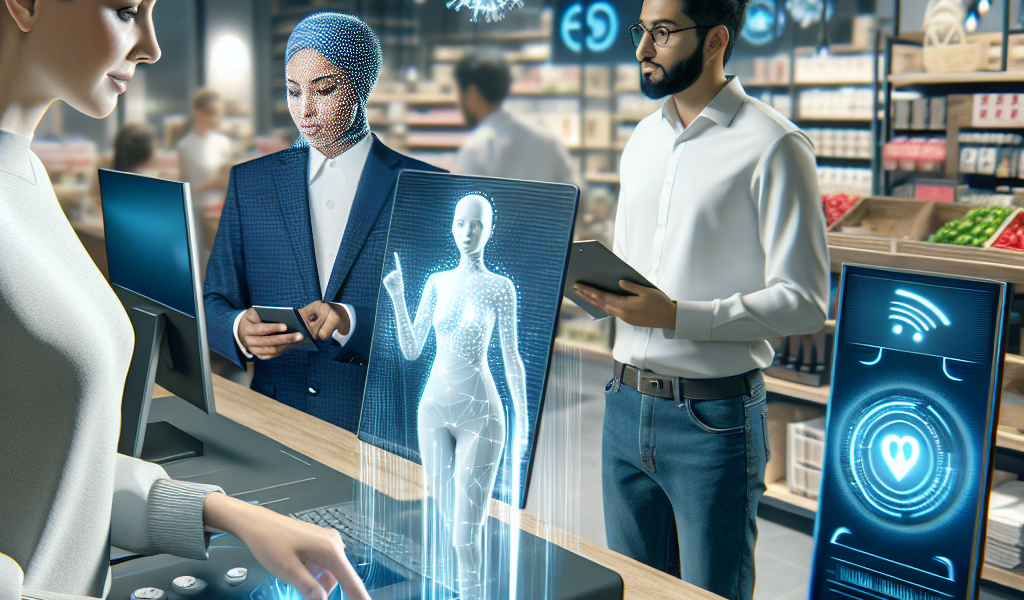-
Table of Contents
“Revolutionizing Retail: Elevating Customer Experience Through Technology”
Introduction

The rapid advancement of technology has profoundly transformed the retail landscape, reshaping the way consumers interact with brands and make purchasing decisions. The integration of digital innovations such as artificial intelligence, augmented reality, and data analytics has revolutionized the customer experience, offering unprecedented levels of personalization, convenience, and engagement. From seamless online shopping platforms to smart in-store technologies, the impact of tech on retail customer experience is multifaceted, driving efficiency and enhancing satisfaction. This evolution not only meets the growing expectations of tech-savvy consumers but also provides retailers with valuable insights to optimize their operations and foster customer loyalty in an increasingly competitive market.
Enhancing Personalization Through AI and Machine Learning
In recent years, the retail landscape has undergone a seismic shift, driven largely by advancements in technology. Among the most transformative of these innovations are artificial intelligence (AI) and machine learning, which have revolutionized the way retailers interact with their customers. These technologies have enabled a level of personalization that was previously unimaginable, fundamentally altering the customer experience in profound ways.
At the heart of this transformation is the ability of AI and machine learning to analyze vast amounts of data quickly and accurately. Retailers can now gather insights from a myriad of sources, including purchase history, browsing behavior, and even social media activity. By processing this data, AI algorithms can identify patterns and preferences that would be impossible for humans to discern. This allows retailers to tailor their offerings to individual customers with remarkable precision, creating a shopping experience that feels uniquely personal.
For instance, consider the way online retailers use AI to recommend products. When a customer visits an e-commerce site, machine learning algorithms analyze their past behavior to suggest items they are likely to be interested in. This not only makes the shopping process more efficient but also enhances customer satisfaction by presenting them with options that align with their tastes and needs. Moreover, these recommendations become more accurate over time as the AI continues to learn from each interaction, creating a virtuous cycle of continuous improvement.
In addition to product recommendations, AI and machine learning are also being used to personalize marketing efforts. Retailers can now send targeted emails and advertisements that are tailored to the individual preferences of each customer. This level of customization increases the likelihood that customers will engage with the content, thereby driving higher conversion rates. Furthermore, personalized marketing helps to build a stronger emotional connection between the brand and the customer, fostering loyalty and long-term engagement.
However, the benefits of AI and machine learning in retail extend beyond just personalization. These technologies are also being used to enhance customer service, another critical component of the retail experience. Chatbots powered by AI can provide instant support to customers, answering questions and resolving issues in real-time. This not only improves the efficiency of customer service operations but also ensures that customers receive the assistance they need without delay. Additionally, AI can be used to predict and preempt potential problems, allowing retailers to address issues before they escalate, thereby improving overall customer satisfaction.
Despite these advantages, it is important to acknowledge the challenges and ethical considerations associated with the use of AI and machine learning in retail. Privacy concerns are paramount, as the collection and analysis of personal data can raise questions about how that information is being used and protected. Retailers must be transparent about their data practices and ensure that they are complying with all relevant regulations to maintain customer trust.
Moreover, there is the risk of over-reliance on technology, which can lead to a loss of the human touch that is so essential in retail. While AI can provide valuable insights and efficiencies, it is crucial for retailers to strike a balance between automation and human interaction. After all, the ultimate goal of these technologies should be to enhance the customer experience, not to replace the personal connections that make shopping a meaningful and enjoyable activity.
In conclusion, AI and machine learning have the potential to significantly enhance personalization in retail, creating a more tailored and satisfying customer experience. By leveraging these technologies, retailers can better understand and meet the needs of their customers, driving engagement and loyalty. However, it is essential to navigate the associated challenges carefully, ensuring that the use of AI is both ethical and balanced. As technology continues to evolve, the retailers that succeed will be those that can seamlessly integrate these innovations into their operations while maintaining the human touch that defines exceptional customer service.
The Role of Augmented Reality in Transforming Shopping Experiences
In recent years, the retail landscape has undergone a seismic shift, driven largely by the rapid advancement of technology. Among the myriad innovations reshaping the industry, augmented reality (AR) stands out as a particularly transformative force. This technology, which superimposes digital information onto the physical world, is revolutionizing the way consumers interact with products and brands, thereby enhancing the overall shopping experience.
One of the most compelling aspects of AR in retail is its ability to bridge the gap between online and in-store shopping. Traditionally, online shoppers have faced the challenge of not being able to physically interact with products before making a purchase. AR addresses this issue by allowing customers to visualize products in their own environment through their smartphones or AR-enabled devices. For instance, furniture retailers like IKEA have developed AR apps that enable customers to see how a piece of furniture would look in their living room before committing to a purchase. This not only reduces the uncertainty associated with online shopping but also significantly lowers the rate of returns, benefiting both consumers and retailers.
Moreover, AR is enhancing the in-store shopping experience by providing customers with additional layers of information and interactivity. Retailers are increasingly using AR to create immersive and engaging experiences that captivate shoppers. For example, beauty brands such as Sephora have introduced AR mirrors that allow customers to virtually try on makeup products. This not only saves time but also offers a fun and personalized shopping experience. By integrating AR into their physical stores, retailers are able to offer a unique value proposition that sets them apart from competitors.
In addition to improving the shopping experience, AR is also playing a crucial role in customer education. Through AR, retailers can provide detailed product information, tutorials, and reviews in an interactive format. This empowers customers to make more informed purchasing decisions. For instance, home improvement stores like Lowe’s have developed AR apps that guide customers through DIY projects, offering step-by-step instructions and visual aids. This not only enhances customer satisfaction but also fosters brand loyalty by positioning the retailer as a helpful and knowledgeable resource.
Furthermore, AR is proving to be a powerful tool for marketing and brand engagement. By creating memorable and shareable experiences, retailers can leverage AR to build stronger connections with their audience. For example, fashion brands have used AR to create virtual fashion shows and interactive advertisements that allow customers to explore new collections in a dynamic and engaging way. These innovative marketing strategies not only capture the attention of consumers but also encourage social sharing, thereby amplifying the brand’s reach.
Despite the numerous benefits, the adoption of AR in retail is not without its challenges. Implementing AR technology requires significant investment in both hardware and software, which can be a barrier for smaller retailers. Additionally, there is a learning curve associated with using AR applications, both for customers and staff. Retailers must therefore invest in training and support to ensure a seamless and enjoyable AR experience.
Nevertheless, the potential of AR to transform the retail customer experience is undeniable. As technology continues to evolve, it is likely that AR will become an increasingly integral part of the shopping journey. By embracing this innovative technology, retailers have the opportunity to not only enhance customer satisfaction but also drive sales and build lasting brand loyalty. In a competitive retail landscape, those who harness the power of AR will undoubtedly stand out, offering a shopping experience that is not only convenient and informative but also truly magical.
How Mobile Technology is Revolutionizing In-Store Customer Engagement
In recent years, mobile technology has dramatically transformed the landscape of in-store customer engagement, creating a more dynamic and personalized shopping experience. As consumers increasingly rely on their smartphones for everything from product research to payment, retailers are leveraging mobile technology to meet these evolving expectations and enhance the overall shopping journey.
One of the most significant ways mobile technology is revolutionizing in-store customer engagement is through the use of mobile apps. These apps serve as a bridge between the digital and physical shopping worlds, offering features such as personalized recommendations, real-time inventory updates, and exclusive in-app promotions. By integrating these functionalities, retailers can provide a more tailored shopping experience that resonates with individual customer preferences. For instance, a customer might receive a push notification about a sale on their favorite brand as they walk past the store, enticing them to step inside and make a purchase.
Moreover, mobile technology has enabled the rise of mobile payment solutions, which streamline the checkout process and reduce wait times. Services like Apple Pay, Google Wallet, and various retailer-specific apps allow customers to complete transactions with a simple tap of their smartphone. This not only enhances convenience but also minimizes physical contact, a feature that has become particularly important in the wake of the COVID-19 pandemic. By offering multiple payment options, retailers can cater to a broader audience and improve overall customer satisfaction.
In addition to facilitating transactions, mobile technology is also enhancing in-store navigation and product discovery. Retailers are increasingly adopting technologies such as Bluetooth beacons and QR codes to provide customers with detailed product information and personalized recommendations as they move through the store. For example, a customer might scan a QR code on a product shelf to access reviews, see related items, or even watch a demonstration video. This level of interactivity not only enriches the shopping experience but also empowers customers to make more informed purchasing decisions.
Furthermore, mobile technology is playing a crucial role in bridging the gap between online and offline shopping experiences. Many retailers now offer features like “click and collect,” where customers can purchase items online and pick them up in-store. This hybrid approach combines the convenience of online shopping with the immediacy of in-store pickup, catering to the needs of time-strapped consumers. Additionally, mobile apps often include loyalty programs that reward customers for both online and in-store purchases, fostering a sense of brand loyalty and encouraging repeat visits.
While the benefits of mobile technology in retail are evident, it is essential to acknowledge the challenges that come with its implementation. Retailers must invest in robust IT infrastructure and ensure that their mobile platforms are secure and user-friendly. Moreover, they need to strike a balance between leveraging customer data for personalization and respecting privacy concerns. Transparency about data usage and obtaining explicit consent from customers can help build trust and mitigate potential issues.
In conclusion, mobile technology is undeniably revolutionizing in-store customer engagement by offering personalized experiences, streamlining transactions, and enhancing product discovery. As retailers continue to innovate and adapt to the digital age, the integration of mobile technology will remain a pivotal factor in shaping the future of retail. By embracing these advancements, retailers can not only meet but exceed customer expectations, ultimately driving satisfaction and loyalty in an increasingly competitive market.
Conclusion
The impact of technology on retail customer experience has been profound, transforming how consumers interact with brands and make purchasing decisions. Innovations such as e-commerce platforms, mobile apps, and augmented reality have enhanced convenience, personalization, and engagement, leading to more informed and satisfied customers. Data analytics and artificial intelligence enable retailers to offer tailored recommendations and streamline operations, further improving the shopping experience. However, the rapid pace of technological change also presents challenges, including privacy concerns and the need for continuous adaptation by both retailers and consumers. Overall, technology has significantly elevated the retail customer experience, making it more dynamic and customer-centric.





